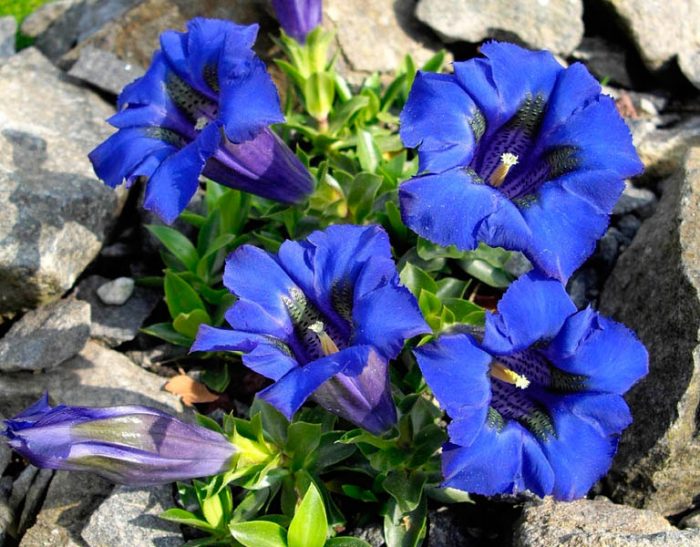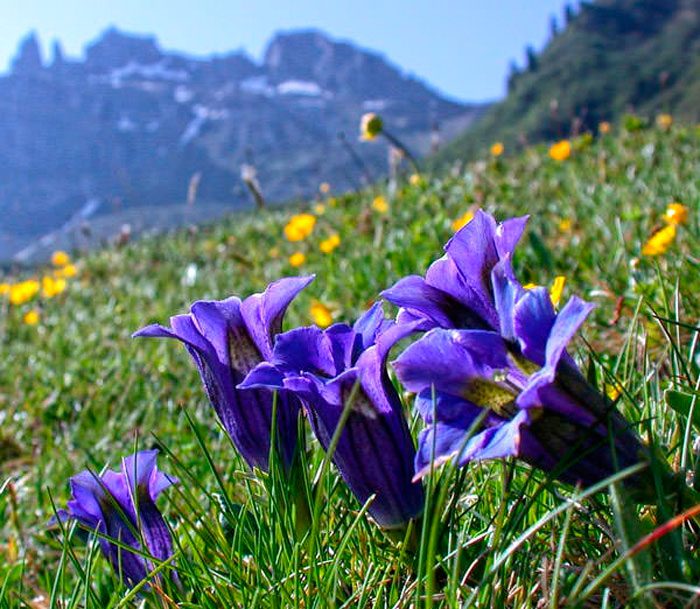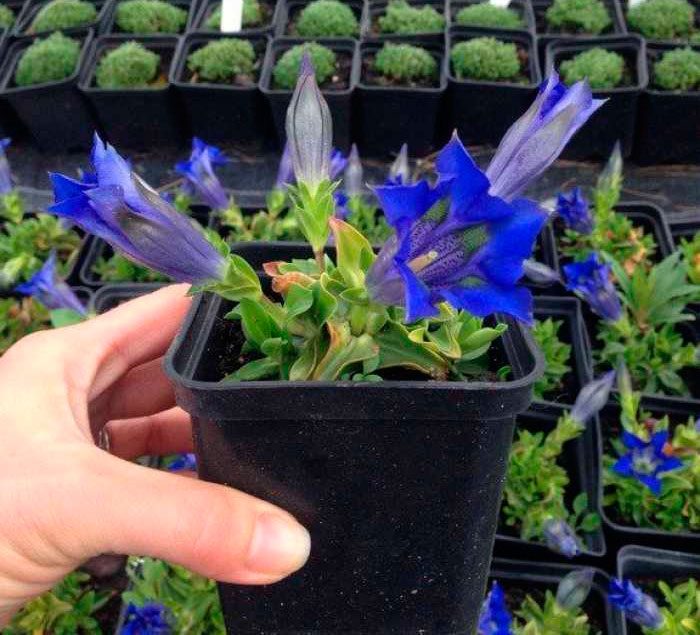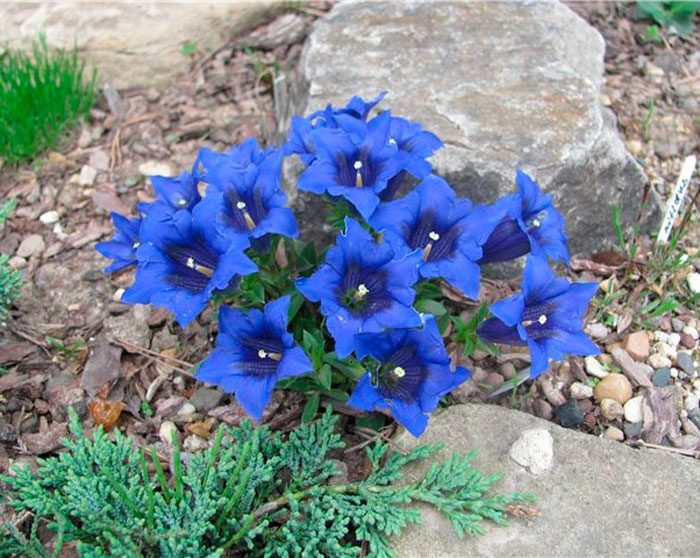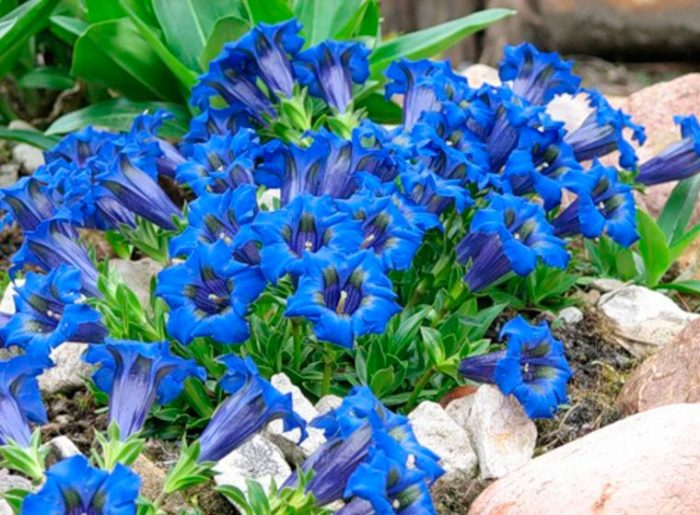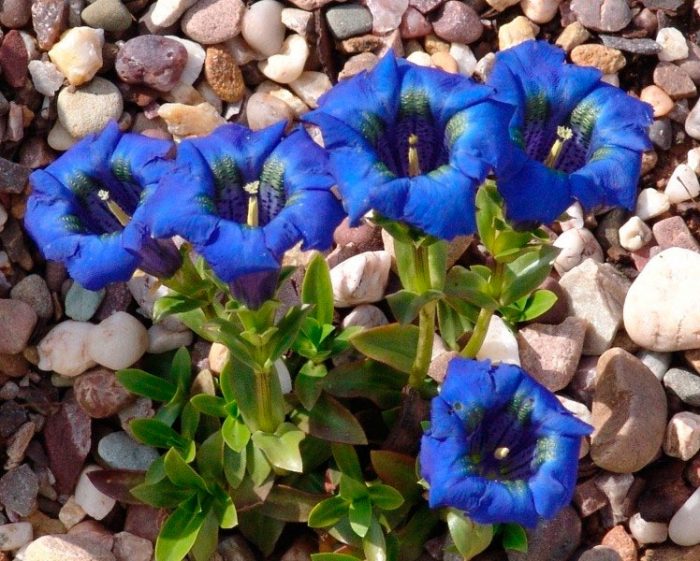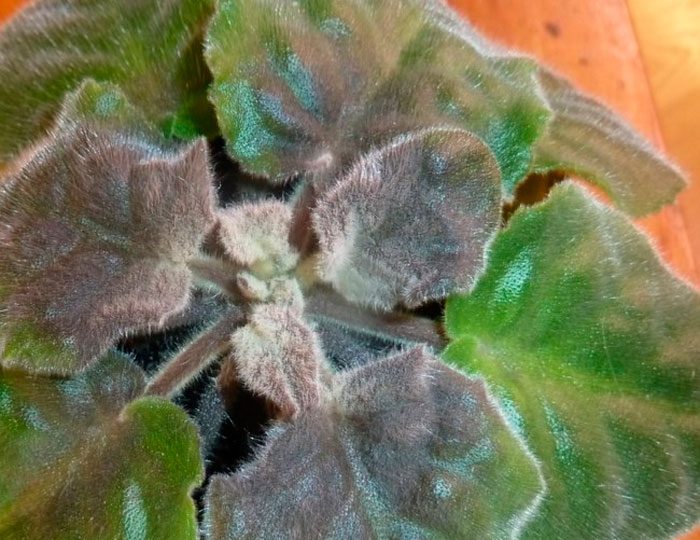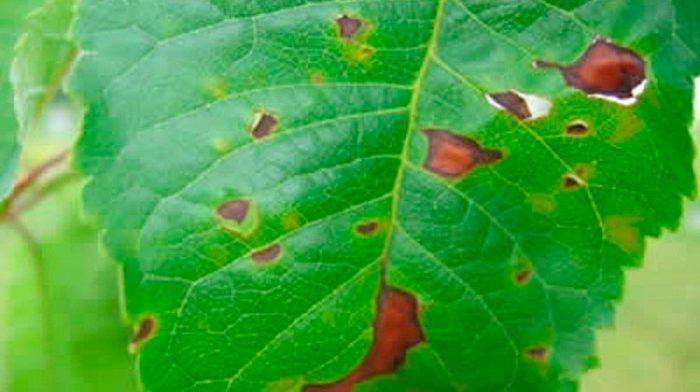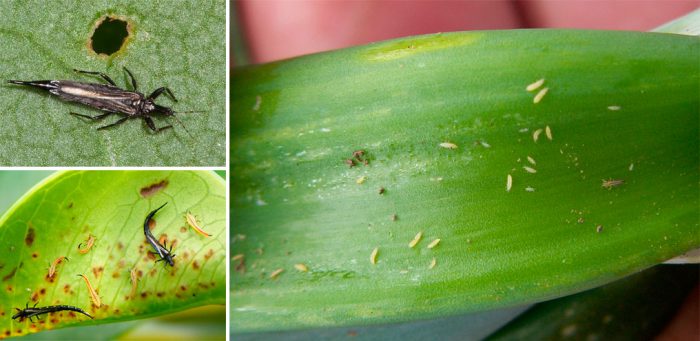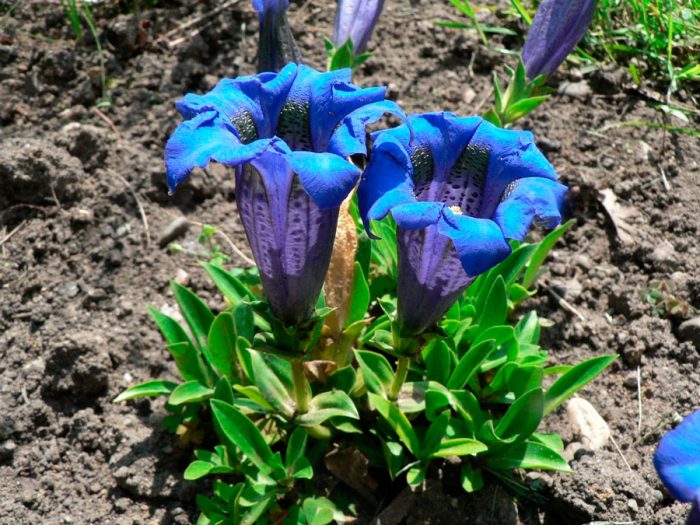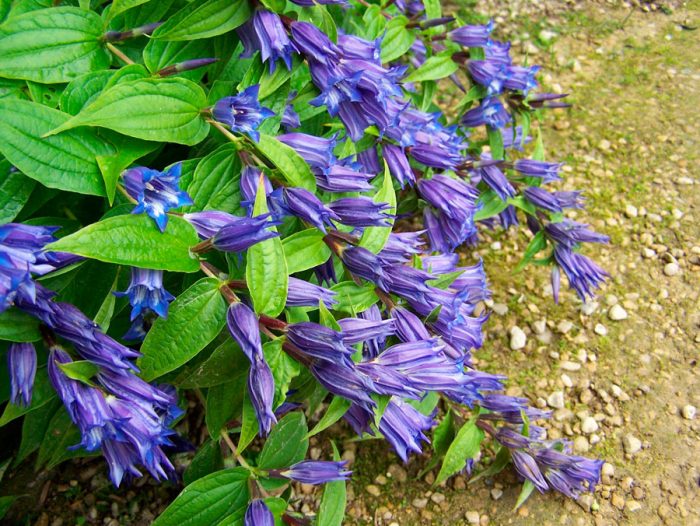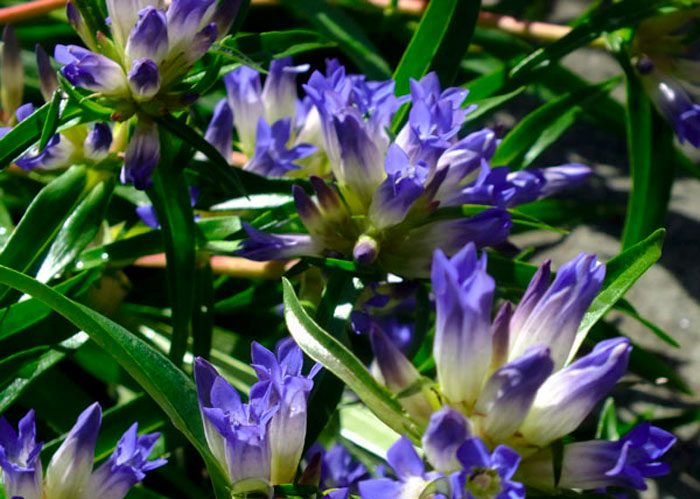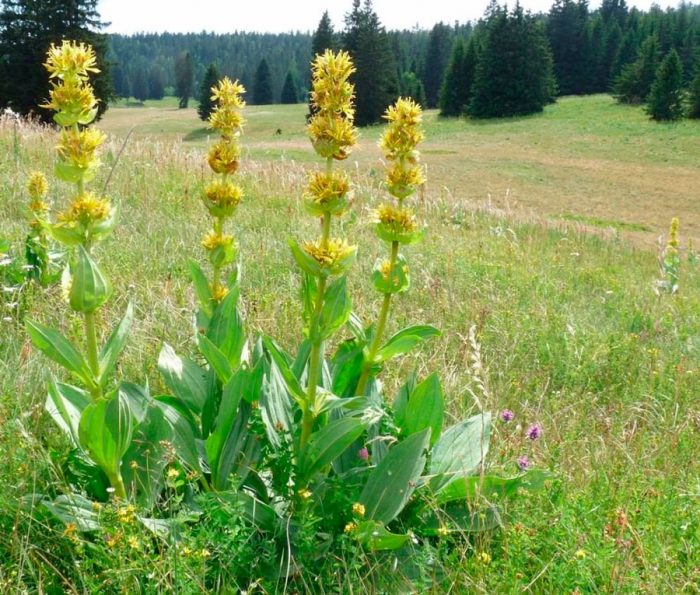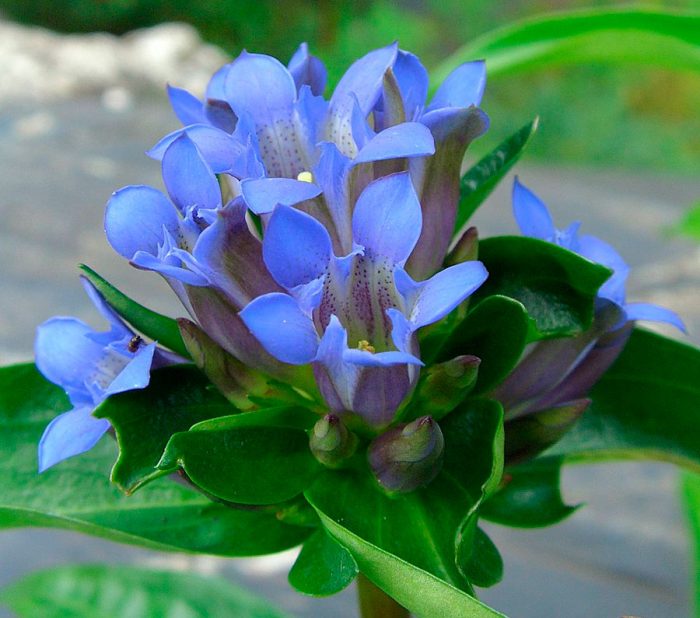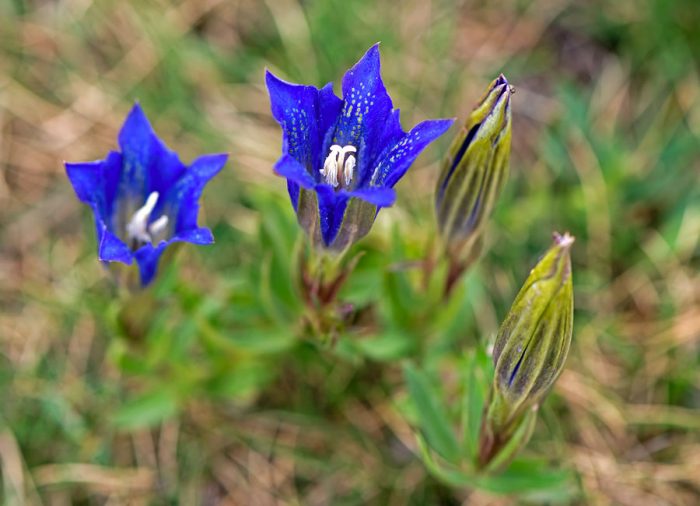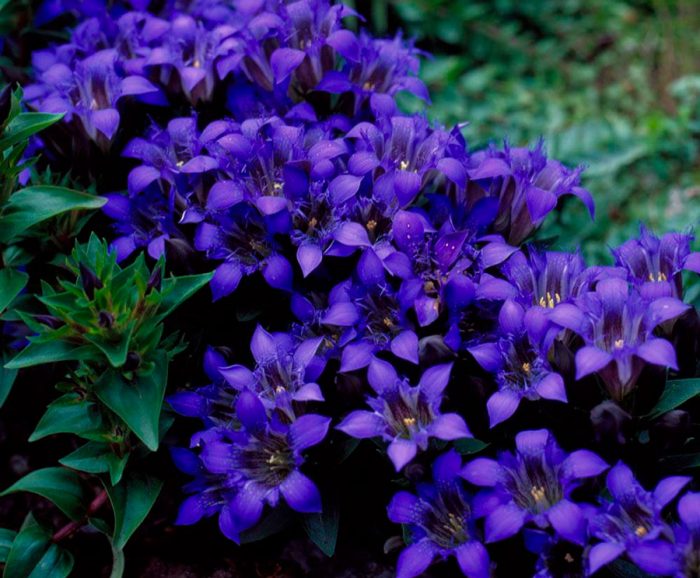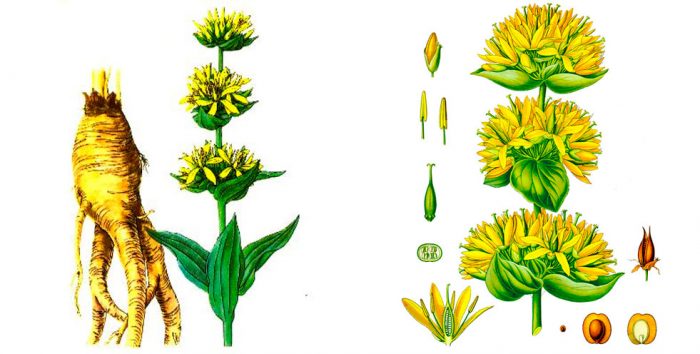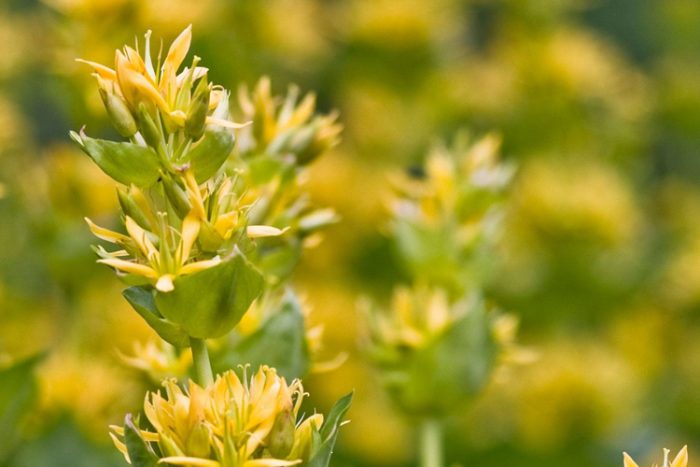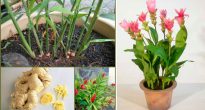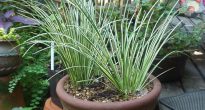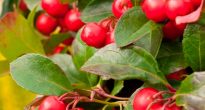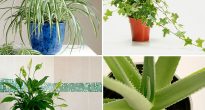The gentian plant (Gentiana), which is part of the Gentian family, is represented by herbaceous annuals or perennials, and also dwarf shrubs. This genus unites about 400 species. Under natural conditions, such a plant can be found on any continent of the Earth, but it is most often found in the temperate zone of the Northern Hemisphere, for example, in subalpine and alpine meadows. Some of the species can be found at an altitude of about 5.5 thousand meters above sea level.
Already in ancient Egypt, gentian was used as a highly effective remedy for stomach diseases. Moreover, in ancient Rome, it was used to treat bruises, seizures and bites of poisonous animals. The herb of this plant in the Middle Ages was used for diarrhea, plague, tuberculosis, fever, and also for getting rid of worms. And today such a culture is very valuable among the healers living in the Carpathians, they use it to treat diseases of the gallbladder, liver and digestive organs. As Pliny the Elder argued, the Latin name for the genus was given in honor of the Illyrian king Gentius, who treated the plague with the rhizome of yellow gentian. This culture received its Russian name due to the bitter taste of rhizomes and foliage, which contain medicinal substances such as glycosides.
Content
Features of gentian
The height of gentian bushes can vary from 0.2 to 0.5 meters. Most often they have short and straight shoots, while the shortened and thick root has several filamentous processes. Alternate sessile leaf plates are solid. Small or single flowers can be four or five membered. Most often they have a blue, blue or purple color, but there are species with white and yellow flowers. The shape of the corolla of a flower can be funnel-shaped or bell-shaped, while in some species it is similar to a plate. The flowering time depends entirely on the species and can be in summer, spring or autumn.The fruit is a bicuspid capsule with small seeds inside.
Planting gentian in open ground
What time to plant
The most popular among gardeners is the seed reproduction of gentian. Sowing, as a rule, is carried out directly into the open ground in the last days of April or at the end of September. Species that bloom in May or in the first autumn weeks, experts do not recommend sowing in areas that are illuminated by the sun at midday, it is recommended to choose a place for their planting on the western slope or in partial shade. For growing species that bloom in autumn, it is best to choose an area located near a reservoir where there is an increased level of air humidity.
Landing rules
If the sowing of gentian in open soil will be carried out in the spring, the sowing material must be preliminarily stratified for two to three months at a temperature of no more than 7 degrees in conditions of excellent ventilation. In some species, seeds need to be stratified at low temperatures for only four weeks. However, if an alpine species is chosen for sowing by gardeners, then it is necessary to stratify the seed for at least 60–80 days. Before putting it in the refrigerator on the shelf intended for vegetables, the seeds should be combined with fine sand or granular peat in a 1: 3 ratio. When sowing in winter, the seed does not need to be stratified, because they will pass it naturally in winter.
The surface of the site is leveled and small gentian seeds are evenly distributed on it, which are only pressed quite a bit into the ground, without sprinkling with earth from above. If the seeds are large, then sprinkle them on top with a thin layer of soil.
If the gentian is grown through seedlings or it was bought in a specialized store, then when planting in open ground between the bushes, it is imperative to maintain a distance, which should be equal to 15 to 30 centimeters. When planting is complete, the area must be watered abundantly. In the same place, such a crop can be grown for 7 years or even longer.
Gentian care
If the gentian was sown on a plot that suits her perfectly, then when growing it, the gardener should have absolutely no problems. When the seedlings appear, they need to ensure timely watering and loosening of the soil surface, and weeds must be removed from the site in time.
If such a plant is grown for decorative purposes, then it will be necessary to remove dried flowers in a timely manner, which will preserve its decorative effect. If the coming winter should be snowy and frosty, then the area where the gentian grows will need to be covered with a layer of spruce branches.
How to water and feed
Such a plant is moisture-loving, therefore it is necessary that the soil on the site be constantly slightly damp. In this regard, it must be watered systematically, while using a sufficient amount of water. It especially needs watering during a prolonged dry period, during the setting of buds or the opening of flowers. When the bed is watered, its surface near the plants must be carefully loosened, while pulling out all existing weeds. In order to reduce the number of watering, weeding and dressing, the surface of the site must be covered with a layer of mulch, which is used as organic material (straw, sawdust or peat).
You do not need to feed such a herbaceous plant, especially if at the beginning of spring you mulch the area with peat, which is pre-mixed with horn flour and limestone.
Diseases and pests of gentian with photos and names
Diseases
When grown in open soil, gentians can be affected by basal or gray rot, rust, leaf blight and some viral diseases.It is most difficult to cure a gentian from gray rot in comparison with other fungal diseases. And to date, an effective cure has not yet been found for viral diseases, so diseased bushes must be dug up and burned as soon as possible so that the virus does not spread further.
Gray rot
If the bush is affected by gray rot, then spots of brownish-gray color appear on its surface, which very quickly increase in size. The development of the disease is observed with high humidity. Over time, gray mold appears on the surface of the stains. The infected parts of the bush must be cut out as soon as possible, using a very sharp instrument that has been disinfected in advance, while it is imperative to grab healthy tissue. Then carry out a thorough treatment of wounds with a solution of Fundazol. In order to prevent the bushes, it is recommended to spray or dust with fungicidal preparations. Most often, such a disease affects gentian when planting thickens, since there is very poor air circulation in them.
Brown spot
Spotting is also a fungal disease. In the affected plant, small brownish-yellow specks appear on the foliage, which have purple rims. They must be sprayed with products containing copper, for example, you can use copper sulfate, Bordeaux liquid or other fungicides of a similar action.
Rust
The causative agents of rust are fungi resistant to chemicals. In a diseased plant, pustules of a dark brown color appear on the leaf plates, and spores of the fungus ripen inside them. Infected parts of the bush are cut out and must be destroyed; they cannot be put into compost. After diseased bushes are seen on the site, all other plants must be sprayed with a fungicidal preparation.
Basal rot is most often affected by Asian species of such a plant, which bloom in the autumn. As the disease develops in conditions of high humidity, rot on the base of the stems of gentian seedlings appears. For prevention purposes, young plants need to be protected from condensation drops; for this, the shelter (glass or film) is placed at a not very large angle. And also in order to protect the seedlings from such a disease, the basal part of the plants is powdered with Tsineba.
Pests
Thrips, slugs, snails, ants, caterpillars and nematodes can settle on the gentian. Slugs and snails noticeably reduce the decorative effect of the bushes, nibbling the buds and leaf plates. If there are hedgehogs and toads (natural antagonists of gastropods) on the site, then this will be very good. If they are not there, then you will need to make traps. To do this, potatoes are placed on the surface of the site in several places, which must first be cut into 2 parts, instead, you can take cans and bury them in the ground up to 1/3 of the neck, pour fermented compote or beer into them.
Ants do not harm this culture, but not all gardeners are pleased to see them on their site. If such a need arises, then you can get rid of them with a special insecticidal preparation, freely sold in a specialized store.
Thrips
Thrips are small sucking insects, their most active reproduction is observed in the warm season. Such insects suck out the cell sap from the gentian, while small discolored dots appear on those parts of the bush where there are punctures. To destroy thrips, you need to use an insecticidal solution.
Caterpillars
Caterpillars pose the greatest danger to germinating seeds and young seedlings. They also get rid of them with the help of insecticidal preparations, while it is necessary to spray the area with them every 1.5 weeks.
Nematodes
The fact that nematodes have settled on the gentian can be understood only by the results of their activity: the apical leaf plates of the bushes are slightly deformed, their development and growth are delayed, the shoots are noticeably bent. To destroy such a pest, the bushes must be sprayed 3 times with a special anti-nematode agent, it can be purchased at a specialized store.
Types and varieties of gentian with photos and names
Most often, gardeners choose perennial gentian species, and not annuals, to decorate their site. Below will be described those species, varieties, as well as hybrids that are most popular with gardeners.
Stemless gentian (Gentiana acaulis)
Or gentian Koch (Ciminalis acaulis = Gentiana excisa = Gentiana kochiana). This herbaceous perennial plant is highly frost-resistant; in natural conditions it can be found in the mountains of Western Europe. The height of its shoots is about 10 centimeters, green leaf plates have an oval-elongated shape, with which the bushes meet winter. The length of large upward-facing flowers is about 50 millimeters, they are colored blue or light blue, while flowering begins in May – June. This species has a variety called alba: the flowers are white.
Gourd gentian (Gentiana asclepiadea), or cottonwood
The height of such a perennial plant can reach 0.8 meters. The length of pointed leaf plates is about 10 centimeters, they have an oblong-oval shape. The height of straight peduncles is about 50 millimeters, they bear from one to three flowers, which are most often painted in dark blue or blue, and in some cases white.
Dahurian gentian (Gentiana dahurica)
The homeland of this species is Mongolia, Tibet, Sayan and Dauria. Straight or ascending shoots in height can reach 0.4 meters. The basal leaf plates narrowed at both ends have a linear-lanceolate shape. Stem leaf plates have a short sheath, while it is practically absent in the upper leaves. The color of large flowers is deep dark blue, they are located in the axils of the upper leaf plates. This species has been cultivated since 1815. Daurian gentian is grown for cutting, and also as a container plant.
Yellow gentian (Gentiana lutea)
Under natural conditions, this species is found in Central Europe and Asia Minor. It is considered the most vigorous of all known gentian species, the height of the bush is about 1.5 meters. The root of such a plant is tap. The large lower leaf plates have petioles and an oval-elliptical shape, while the stem leaves are smaller. The length of yellow flowers is about 25 millimeters, their formation occurs at the tops of the shoots, and also in the axils of the upper leaf plates. Bushes bloom in the middle of the summer period, and flowering lasts 1.5-2 months. This frost-resistant species is able to hibernate without shelter. It has been cultivated since 1597.
Large-leaved gentian (Gentiana macrophylla)
This species has a wide growing area, so in nature it can be found in Mongolia, Central Asia, Western and Eastern Siberia, China and the Far East. The height of its straight or rising shoots is about 0.7 meters, while in diameter they reach from 0.3 to 0.6 centimeters. The base of the shoots to a height of 20–80 millimeters is shrouded in fibrous remains of old leaf blades.
Pulmonary gentian (Gentiana pneumonanthe)
In nature, this species is found in Asia and Europe. The height of erect shoots is about 0.65 meters, they are not branched and densely leafy. The length of the linear-lanceolate leaf plates is about 60 millimeters, and their width is 6 millimeters. The formation of dark blue flowers is observed in the leaf axils and at the top of the shoots. Their calyx is bell-shaped, and the rim is tubular-clavate.
Gentian (Gentiana septemfida)
In nature, the species can be found in Iran, the European part of Russia, Asia Minor, Crimea and the Caucasus. The height of the bush is about 0.3 meters, it has many shoots, which are ascending or erect, they are covered with lanceolate leaf plates. The heads are composed of dark blue flowers with a length of about 40 millimeters. This species has been cultivated since 1804.
Gardeners also cultivate such species as: spring gentian, Delecluse (or Clusi), Dinaric, Kolakovsky, Chinese decorated, large-flowered, ciliate, frosty, dotted, three-flowered, narrow-leaved and rough.
Today there are a large number of gentian hybrids that are highly decorative. Of greatest interest to gardeners are:
- Nikita... The bush is adorned with a large number of flowers of medium size and azure blue color.
- Bernardi... This species begins to bloom in August. Partially tubular flowers have a dark azure color.
- Dark Blue... Such an autumn variety has flowers of a rich ultramarine color, they have dark stripes along the inside of the petals.
- Blue emperor... In such a dwarf variety, the flowers have an ultramarine color.
- Farorna... The flowers are pale blue with a white-cream corolla.
- Gloriosa... This Swiss variety has wide-open blue flowers, their throat is snow-white.
- Elizabeth Brand... Azure flowers have an elongated shape, short shoots are painted in a pale brown color.
Gentian properties: harm and benefit
Medicinal properties of gentian
Most of the gentian species have medicinal properties, in this regard, such a culture has found wide application in official and alternative medicine. The most important substance in such a plant is glycoside, which helps to stimulate appetite, normalize the functioning of the digestive organs, and also has an antispasmodic effect. The root also contains alkaloids, which are able to suppress coughs and cramps, lower the temperature, and they also have a sedative and anti-inflammatory effect. Also, the roots contain resinous and tannins, aromatic compounds, pectins, inulin, fatty oil, sugars and ascorbic acid. In most gentian species, phenol carboxylic acids are found in the roots, which help to enhance the evacuation function of the intestine. Preparations made on the basis of this plant are recommended for use in such diseases as: constipation, diathesis, anemia, achilia, flatulence, tuberculosis, malaria, heartburn, sore throat, cancer and chronic hepatitis. Traditional medicine recommends the use of products such as bitter extract or bitter tincture of yellow gentian. This plant is also included in fees that are used to increase appetite.
In alternative medicine, gentian-based water products are often used, while they are taken internally and also applied externally. For example: a decoction is recommended for severe sweating of the legs; purulent wounds must be sprinkled with powder, which includes chamomile and gentian roots (1: 1); gruel made from the aboveground and underground parts of gentian is used to make a compress that relieves muscle and joint pain.
Folk recipes
There are several fairly effective folk recipes from gentian:
- To improve appetite... Dried gentian roots in the amount of 1 tbsp. l. must be combined with 1 tbsp. water. The mixture should boil over low heat for 10 minutes. The cooled strained broth is drunk before meals, 20 milligrams each.
- For arthritis and rheumatism... 0.7 liters of water must be combined with 3 tbsp. l. dry gentian. The mixture is allowed to boil for 15 minutes, and then it is insisted for a couple of hours. The filtered broth is drunk before meals for ½ tbsp.
- For malaria, chronic heartburn, pulmonary tuberculosis, sluggish digestion and constipation... Half a liter of vodka must be combined with 50 grams of dried gentian, a bottle of dark raw materials must be tightly corked and removed for 7 days to infuse in a cool and dark place. The strained tincture should be drunk 30 drops 1 time a day, they are previously diluted with 6 tbsp. l. water.
Contraindications
Means based on such a plant should not be taken during pregnancy, individual intolerance to bitterness, hypertension, stomach and duodenal ulcers. Do not take more than 35 drops of alcoholic tincture of gentian per day. In case of an overdose, you can feel vertigo, headaches, and sometimes reddening of the face is observed.
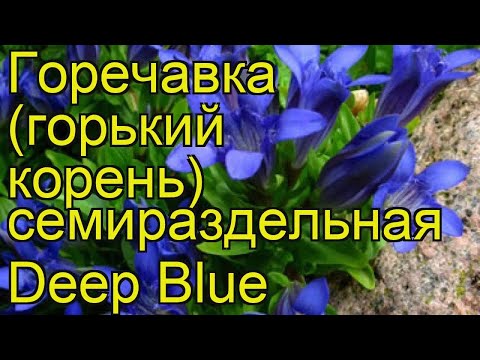

Watch this video on YouTube

